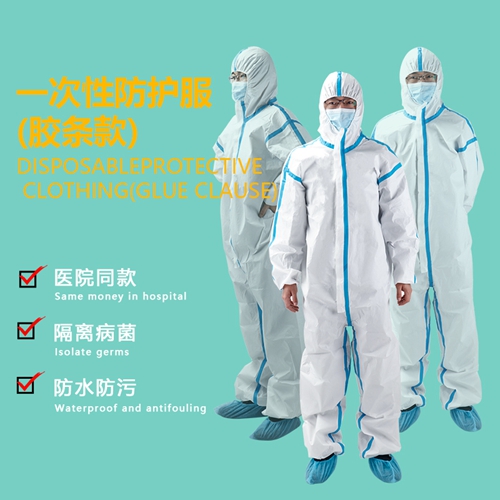1. Protection
(medical clothing)
Protection is the most important performance requirement of medical protective clothing, mainly including liquid barrier, microbial barrier and barrier to particulate matter.
Liquid barrier refers to that the medical protective clothing shall be able to prevent the penetration of water, blood, alcohol and other liquids, and have a hydrophobicity of more than grade 4 to avoid contaminating clothes and human body. Avoid transmitting the virus carried by the patient's blood, body fluid and other secretions to the medical staff during the operation.
Microbial barrier includes the barrier to bacteria and viruses. The barrier to bacteria is mainly to prevent the contact transmission (and back transmission) of traditional Chinese medicine nurses to the patient's surgical wound during the operation. The barrier to the virus is mainly to prevent the cross infection between doctors and patients caused by the virus carried by medical staff when they contact the patient's blood and body fluid.
Particulate matter barrier refers to preventing viruses transmitted through the air from being inhaled or attached to the skin surface in the form of aerosols and absorbed by the human body.
2. Comfort
(medical clothing)
Comfort includes air permeability, water vapor penetration, drapability, quality, surface thickness, electrostatic performance, color, reflectance, odor and skin sensitization. The most important is the air permeability and moisture permeability. In order to enhance the protective effect, the protective clothing fabric is usually laminated or coated, resulting in heavy and poor air permeability and moisture permeability. Long term wearing is not conducive to sweat and heat dissipation. The anti-static requirement is to prevent static electricity in the operating room from causing a large amount of dust and bacteria to be adsorbed by the operating suit, which is unfavorable to the patient's wound, and to prevent the spark generated by static electricity from detonating the volatile gas in the operating room and affecting the accuracy of precision instruments.
3. Physical and mechanical properties
(medical clothing)
Physical and mechanical properties mainly refer to the tear resistance, puncture resistance and wear resistance of medical protective clothing materials. Avoid tearing and puncture to provide channels for the transmission of bacteria and viruses. Wear resistance can prevent floc falling and provide a place for the reproduction of bacteria and viruses.
4. Other performance
(medical clothing)
In addition to the properties listed above, medical protective clothing also needs to have disinfection tolerance, good color fastness to washing, shrinkage prevention, non combustion supporting, non-toxic, non irritating and harmless to the skin.



